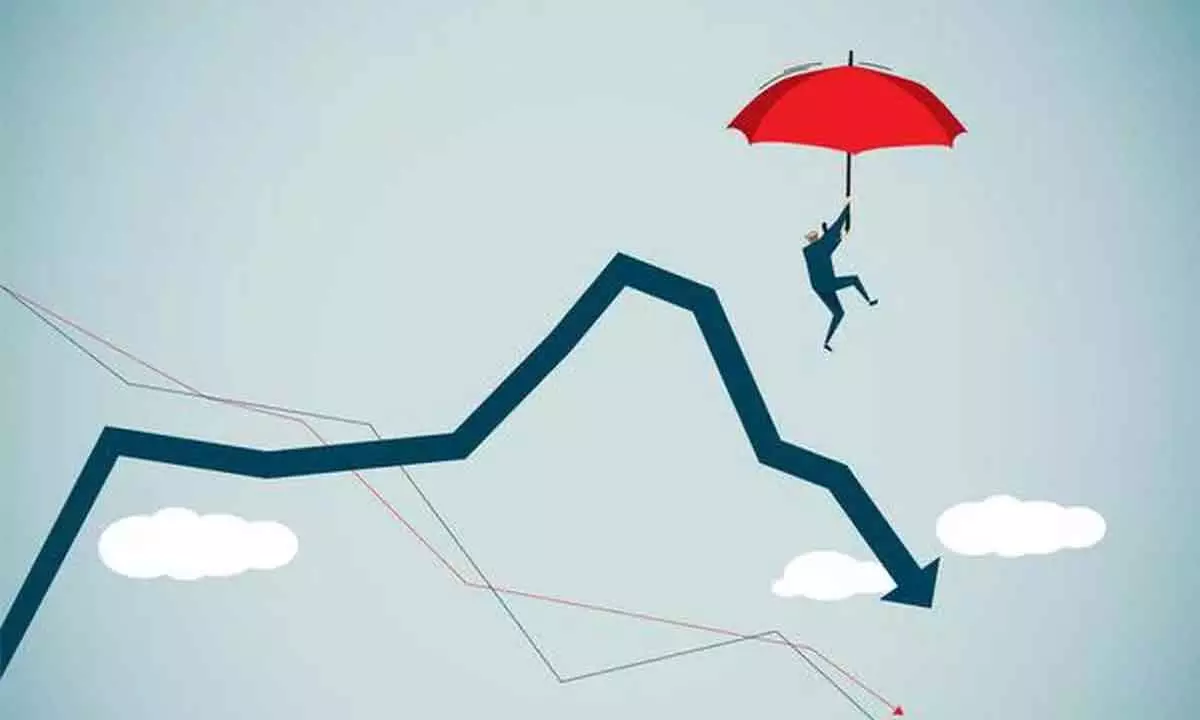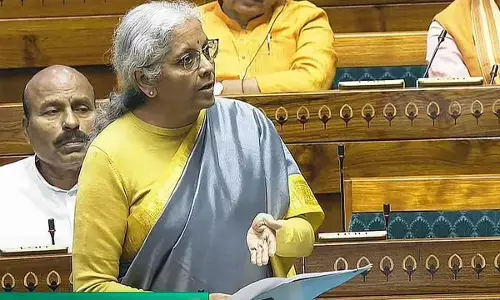Better to avoid speculative positions amid volatility

The markets will remain shut on Thursday (March 30) for Sri Ram Navami
Spooked by the hike in Securities Transaction Tax (STT) on Futures and Options (F&O) trade by the government, correction in European banking stocks after rate hikes by the ECB and rising CDS (credit default swap) spreads and renewed selling from FIIs; the domestic stock markets ignored the less Hawkish stance of US Fed to fall for a third consecutive week during the week ended. BSE Sensex dropped 0.8 percent to close at 57,527, and NSE Nifty declined 0.91 per cent to 16,945 points, the lowest closing level on weekly basis since July last year. Unnerved by the weakness in frontline stocks, in the broader markets the Nifty Midcap index was down 1.75 percent and Smallcap index slipped 1.88 percent to close at the lowest levels since July 2022.
The consistent FII outflow was also one of reasons behind correction in the equity markets. Given the global concerns including banking stress and growth worries, the FII flow is unlikely to improve in coming weeks. During the month, FPIs have been sellers in most emerging markets except China which continues to witness inflows due to the opening-up trade. Manufacturing activity in China, the world's second-largest economy, expanded at the fastest pace in more than a decade in February as production increased after the lifting of Covid restrictions in December. On the home front inflation continued to be very stubborn after agricultural commodities saw some rebound in arrival season due to untimely heavy rain which is creating fear of crop and yield loss. Observers expect that Reserve Bank of India (RBI) will raise the repo rate by 25 basis points in April before it goes for a pause. Gold and silver are witnessing new wave of investment and both are trading in upper territory.
The upside is expected to continue because dollar index is looking bearish. Gold and silver can trade in a range of 57,000-61,000 and 68,500-71,500 respectively. In near term, Indian markets are expected to remain range-bound due to a lack of triggers. Direction of the markets will be dictated by news flow on mayhem in the global financial sector, international crude oil prices, rupee-dollar movement and expectations over Q4 results. The markets will remain shut on March 30 for Sri Ram Navami.
Listening Post
Throwing a lifeline to the financial system in times of crisis can have unintended consequences. Among them: Making the world feel safer can lull people into complacency and excessive risk-taking. Don't panic. That's the message financial regulators are sending—and it is barely working. In the past fortnight, US authorities promised to back uninsured deposits at the failed Silicon Valley Bank and Signature Bank. They also created a new program to lend up to $25 billion to other banks with shaky balance sheets. Panic selling of bank stocks led to panic buying of US Treasury. By second week the jitters jumped across the ocean to Europe. Credit Suisse's stock price fell 24 per cent, its worst daily drop ever, after investors feared it, too, might need to be rescued.
The next day, it was, with a loan of up to $53 billion from the Swiss central bank and finally acquisition by UBS. Markets may be signalling that the long, cult like reverence for regulators and central banks is finally fading. The attempt to eradicate failure from the financial system, of course, is part of modern society's broader push to make life itself riskless and idiot-proof, with indestructible baby strollers, child-resistant drug packaging, almost self-driving cars and shoe removal at airport security. Making an environment feel safer can lull many people into complacency and excessive risk-taking. It also tends to coalesce massive power into the hands of a few people at the pinnacle of the financial system. Over the past couple of decades, the Fed, the Treasury and other authorities across the globe have stepped in time after time to stabilize the financial markets, as if failure were no longer an option.
Among the most notable interventions was in the 2008-09 financial crisis, backing money-market funds with up to $50 billion, pouring more than $425 billion into troubled banks and industrial companies, and buying more than $1.7 trillion in government securities and for most of the ensuing years, keeping interest rates near rock bottom. Unfortunately, having some sway over markets can delude regulators and policy makers into believing that they can foresee the future. Recent hikes of interest rates to control inflation goes to illustrate an even bigger problem: Central authorities aren't omniscient and omnipotent, and their efforts to wring risk out of the system may make it more dangerous, not less. The expectation that government authorities will rescue bankers and investors from their own reckless behaviour may have become a self-fulfilling prophecy.
The attempt to control risk by lowering interest rates reduces the cost of taking risk, and so ends up increasing the aggregate amount of risk in the system. Over the past 25 years or so, each crisis has become more complex than the one that preceded it, each one has cost more in losses, and each one has spread wider across industries and countries. Faith that governments can control the madness of markets is a relatively new idea and in the 19th century, investors and economists almost universally acknowledged that panic was inseparable from prosperity and an inevitable part of the business cycle. Every decade, typically included a few months to a few years of panic. Even though they were caused by people, panics were likened to earthquakes, whirlwinds, tornadoes, hurricanes, a roaring and raging sea: forces of nature beyond any hope of human control.
Amid this latest banking crisis, the Fed may no longer be able to raise interest rates as aggressively as it had planned. The ultimate legacy of excess belief in the boundless brainpower of regulators is overconfidence: too many people thinking their money is safer than it really is and taking bigger risks than they should. If everybody thinks there's a rich uncle who will bail them out whenever they make mistakes, it will lead to more risky decisions.
Quote of the week:
"We don't prognosticate macroeconomic factors, we're looking at our companies from a bottom-up perspective on their long-run prospects of returning." — Mellody Hobson
It's very difficult to predict when the next recession or stock market crash will come, so many of the best investors don't even try. Instead, look for good companies with the strength to make it through the occasional challenging economic environment.
(The author is a senior stock market analyst and former vice-chairman of AP Planning Board)



















